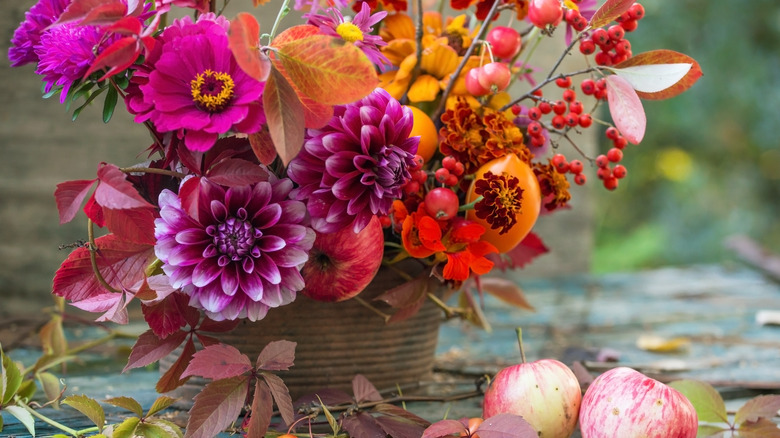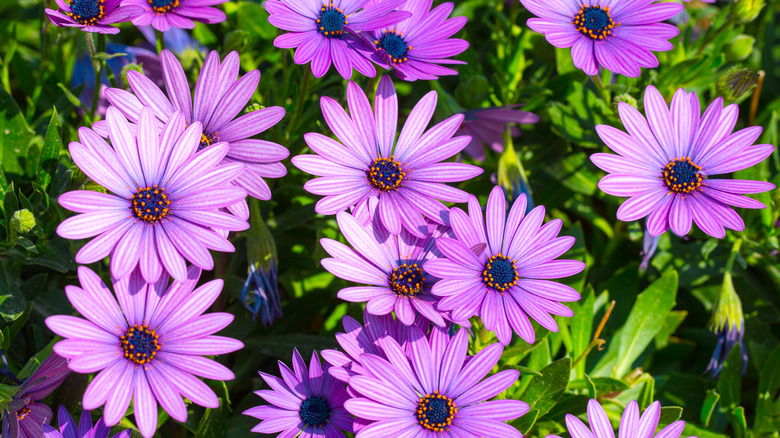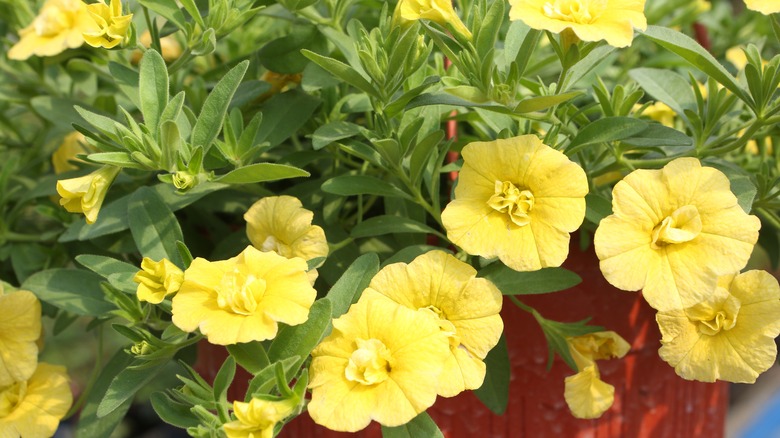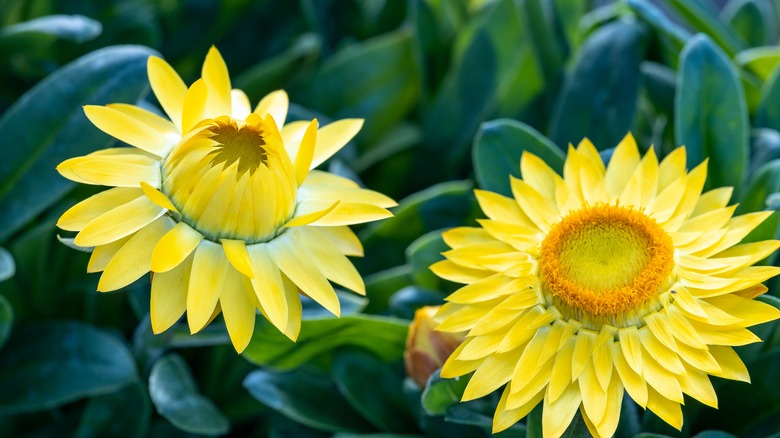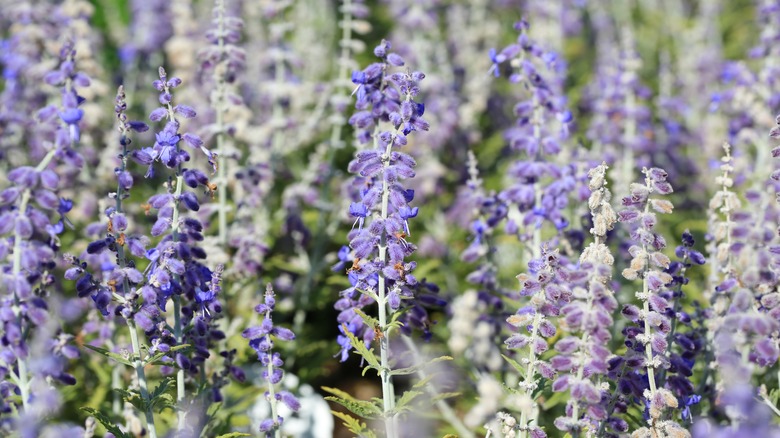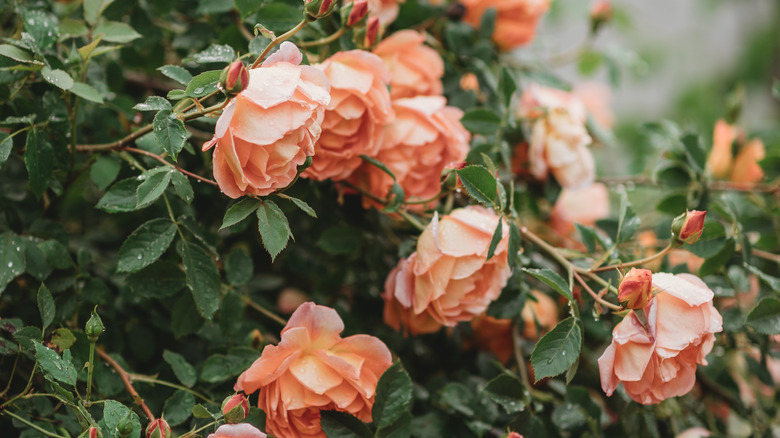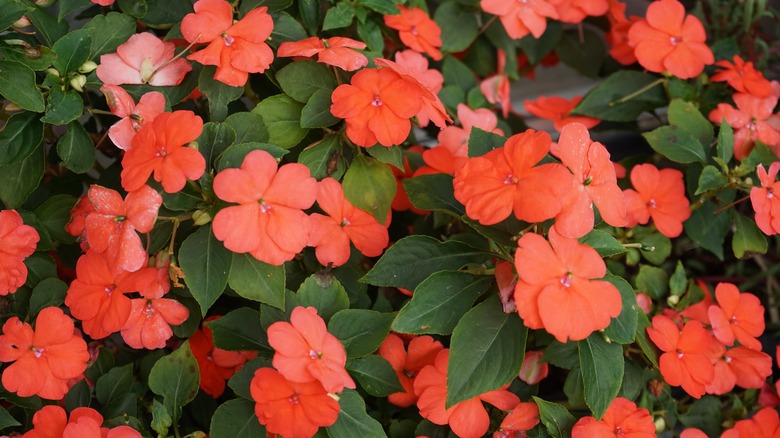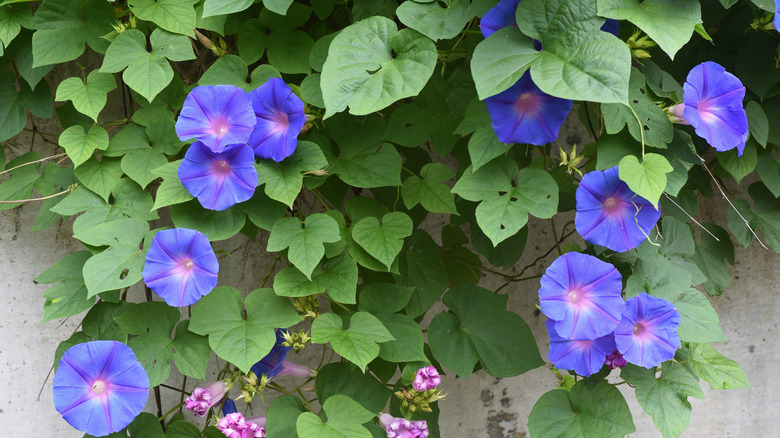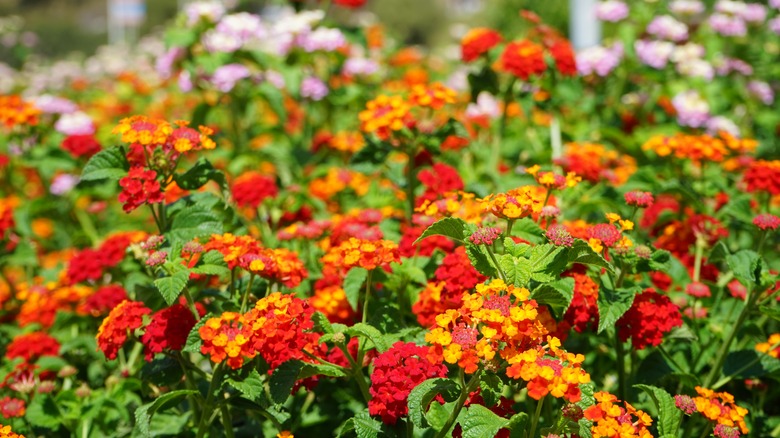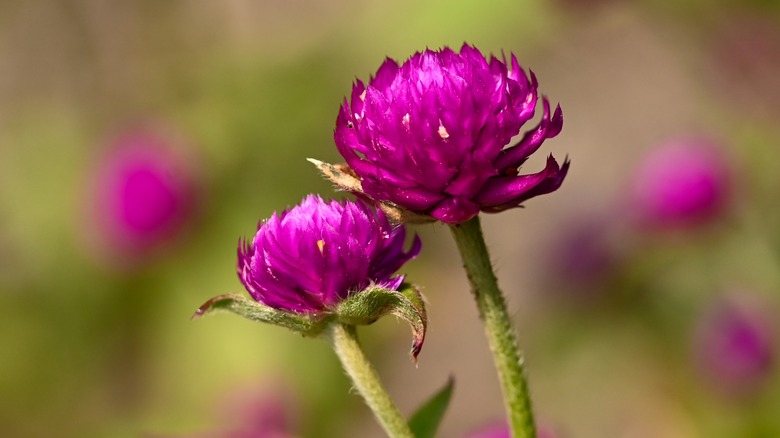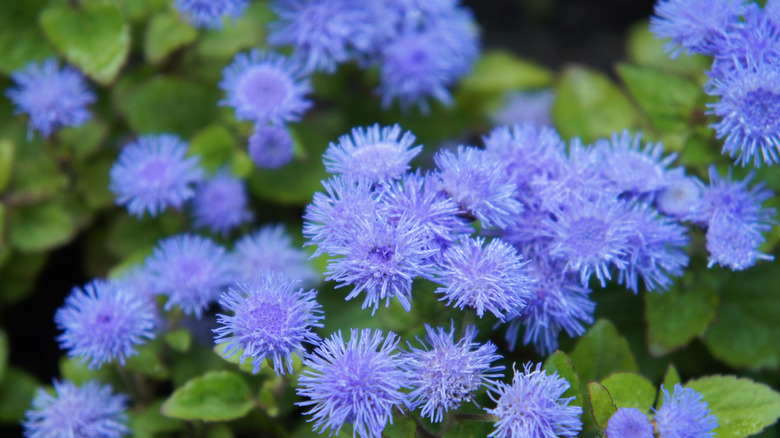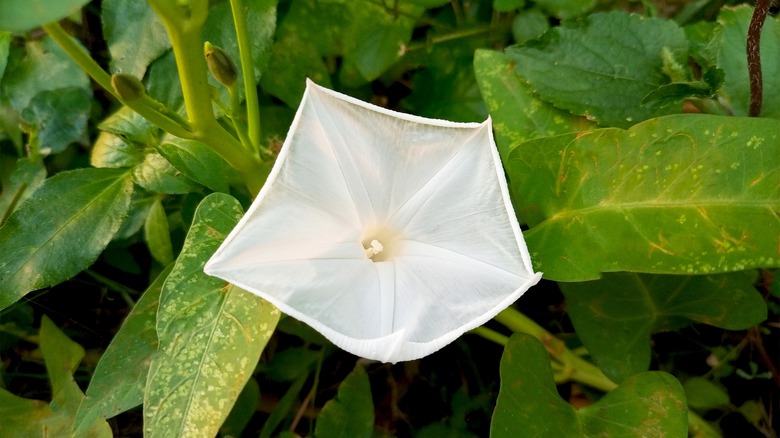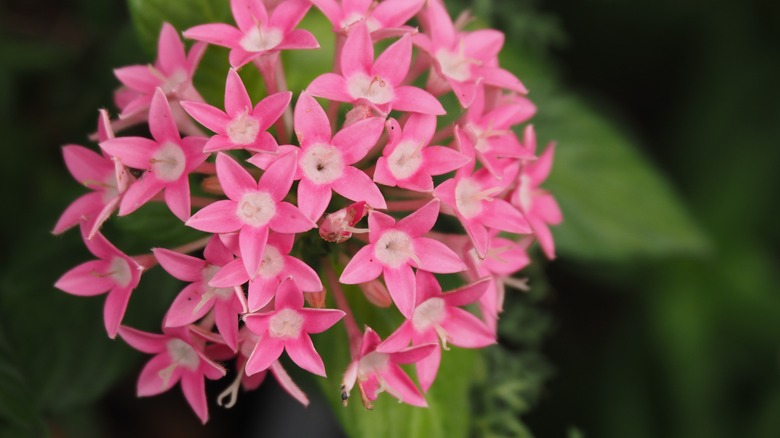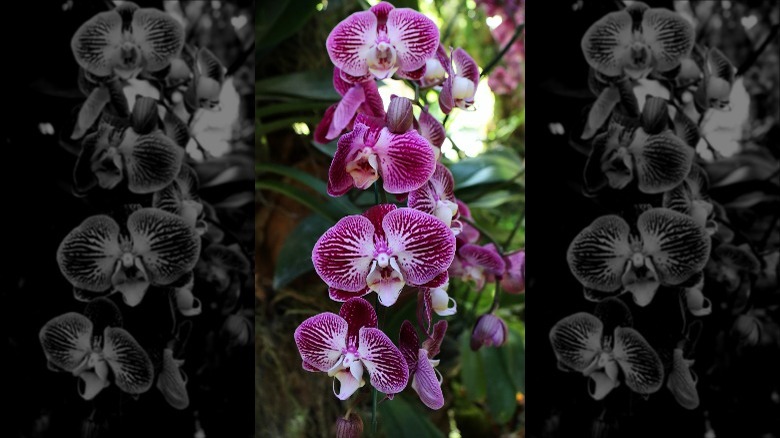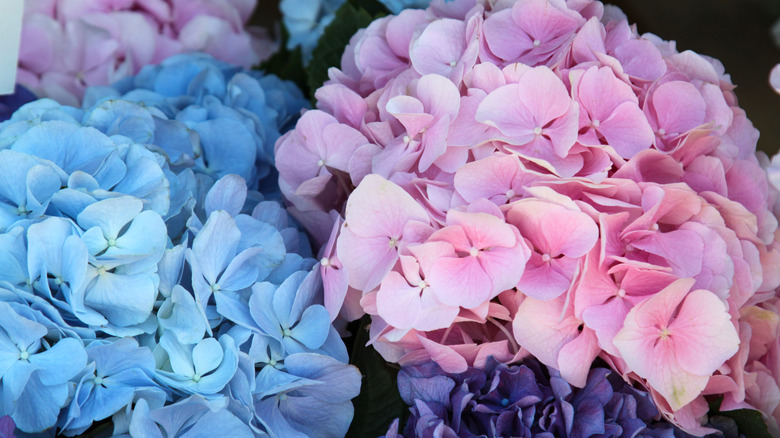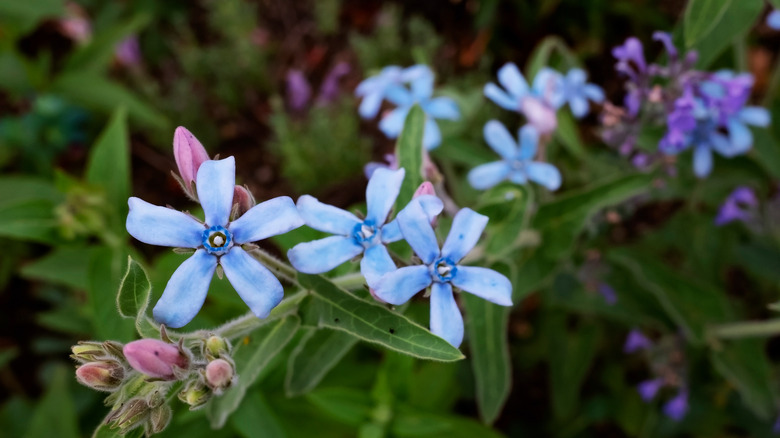15 Flowers That Will Bloom In Your Garden In Late Fall
While many gardens focus on the spring and summer, did you know there are multiple types of flowers that bloom and thrive into fall? Especially if you live in a temperate climate, you can create a lovely autumn environment that you can enjoy both indoors and out. According to Garden Design, some flowers will start blooming earlier in the season and exhibit impressive staying power through fall until the first frost. In contrast, others will remain dormant and make themselves known only in the fall.
Another bonus? If you live in a warm climate, tending a fall garden involves a lot less sweating and sunburn. If you are interested in creating a fall garden, variety is key. Select lots of different colors and bloom sizes, and keep in mind that some plants can be used as cuttings for indoor centerpieces. From pansies to chrysanthemums, many of your favorite flowers can do quite well in the fall.
1. African daisy
The African daisy (Osteospermum spp) likes conditions similar to those found in Africa, as its name states. Dry weather and lots of sun make for an ideal growing environment. According to Plant Addicts, it's also a very low-maintenance flower — it can grow in even poor soil conditions, although it does prefer a bit of moisture if possible.
Bloom Season: Spring, summer, fall
USDA Growing Zone: 9 to 11
Growing Conditions: Full sun
Soil Type: Moist, well-drained
Size: 1 to 3 feet tall, 1 to 2 feet wide
2. Calibrachoas
Calibrachoas (Calibrachoa group) are happy little flowers that grow in groups. According to Proven Winners, you can plant them in pots, hanging baskets, window boxes, or flower beds. The important part of raising content calibrachoas is to keep them well-watered and fertilized. The more nutrients they receive, the better they will bloom.
Bloom Season: Spring to fall
USDA Growing Zone: 9 to 11, or kept as an annual in all zones
Growing Conditions: Full sun to partial shade
Soil Type: Moist, rich, well-drained
Size: 6 to 12 inches tall, 12 to 24 inches wide
3. Strawflower
Strawflowers (Xerochrysum bracteatum) carry the nickname "paper daisy" due to their similar appearance. However, strawflowers can come in much more creative colors. Best of all, as stated by Gardeners Path, this flower is a continuous bloomer, meaning it'll show off in your garden until at least the first frost. You'll get a lot of mileage out of its beauty during the warmer months, including mid-fall in some climates.
Bloom Season: Spring, summer, fall
USDA Growing Zone: 8 to 10
Growing Conditions: Full sun
Soil Type: Well-drained
Size: 2 to 3 feet tall, 15 to 18 inches wide
4. Russian sage
Russian sage (Perovskai atriplicifolia) covers a garden like a gentle lavender cloud. It's no wonder it's a popular flower choice for fall gardens. According to Monrovia, this plant is vigorous and heat-loving — it will do quite well in a warm climate that doesn't see a lot of rain. Pair it with other hot weather lovers like succulents or ornamental grasses, and you'll have a beautiful, low-maintenance garden in no time.
Bloom Season: Summer, fall
USDA Growing Zone: 4 to 9
Growing Conditions: Full sun
Soil Type: Well-drained
Size: 3 to 4 feet tall and wide
5. At Last roses
At Last roses (Rosa x) is a fragrant, disease-resistant rose that will bloom until frost, according to Proven Winners. They come in a beautiful peach-orange hue that makes them stand out in any garden, especially in the fall, where their color perfectly matches an autumn-themed flower bed. Best of all, they are notoriously low-maintenance compared to other roses.
Bloom Season: Spring to frost
USDA Growing Zone: 5 to 9
Growing Conditions: Full sun
Soil Type: Well-drained
Size: 30 to 36 inches tall and wide
6. Impatiens
According to Almanac, impatiens (Impatiens wallerana) are used as bedding plants but can also thrive well in container planters. Lovers of shade and moisture, impatiens can hold up in rain and bloom well into fall if they are in a temperate enough climate. Be sure, however, to shelter them from any harsh wind.
Bloom Season: Spring to fall
USDA Growing Zone: 10 to 11
Growing Conditions: Full to partial sun
Soil Type: Well-draining
Size: 10 to 16 inches tall and wide (via Clemson Cooperative Extension Home & Garden Information Center)
7. Morning glory
Morning glories (Ipomoea purpurea) are an old-fashioned beauty that brings charming cottage vibes to any home. And while they are beautiful, Garden Design warns they are aggressive growers. This climbing flower vine must be well-maintained, or it will quickly grow out of control. On the bright side, it grows and thrives in virtually any climate during the summer and fall.
Bloom Season: Summer to fall
USDA Growing Zone: 9 to 11
Growing Conditions: Full sun
Soil Type: Moist, well-drained
Size: 6 to 12 feet tall and wide
8. Lantana
Lantanas (Lantana camara) are highly valued for their long, consistent blooms, according to Clemson Cooperative Extension Home & Garden Information Center. Lantanas come in various colors, including vibrant red and yellow clusters that beautifully adorn a garden. They are also great at attracting butterflies and hummingbirds if you want to welcome frequent guests.
Bloom Season: Spring to frost
USDA Growing Zone: 7 to 11 (via The Herb Exchange)
Growing Conditions: Full sun
Soil Type: Well-drained
Size: 5 to 6 feet tall, 4 feet wide
9. Gomphrena
Gomphrena (Gomphrena globosa) is a globe-shaped flower that has been a favorite cutting flower of American florists for generations (per Gardenista). Their flowers are sometimes referred to as "bachelor buttons," and the petals are a convincing dupe for clover flowers. Gomphrena has been used in gardens for centuries and is known for its long blooming season.
Bloom Season: Summer to fall
USDA Growing Zone: 2 to 11
Growing Conditions: Full sun
Soil Type: Well-drained
Size: 12 to 24 inches tall, 12 inches wide (via Wisconsin Horticulture Division of Extension)
10. Blue ageratum
Blue ageratum (Ageratum houstonianum) grows in adorable clusters, bursting in lavender blue, pink, or white. According to North Carolina Extension Gardener Plant Toolbox, they will bloom as late as October and are sometimes known as "floss flowers" for their light petals that look much more delicate than they actually are. In reality, blue ageratum can grow in almost all zones with proper care.
Bloom Season: Summer to frost
USDA Growing Zone: 2 to 11
Growing Conditions: Full sun to partial shade
Soil Type: Moist, well-drained soil
Size: 6 to 24 inches tall, 6 to 12 inches wide
11. Moonflower
Moonflowers (Ipomea alba) are pure white stunners with yellow centers — they are a beautiful contrast beside more colorful blooms. According to 1-800-Flowers.com, moonflowers get their name because they are nocturnal plants — they bloom at sunset and remain open until the morning's light. They are tropical perennials, so they can be enjoyed for large portions of the year.
Bloom Season: Summer to fall
USDA Growing Zone: 10 to 12
Growing Conditions: Full sun
Soil Type: Moist, well-drained
Size: 10 to 15 feet tall, 3 to 6 feet wide (via Missouri Botanical Garden)
12. Pentas
Pentas (Pentas lanceolata) grow in clusters that look like pink stars. They will bloom all summer and continue into the fall. Best of all, according to Costa Farms, they are deer-resistant, which is a big deal for our rural gardening friends that know how wildlife can sometimes wreak havoc on a flower bed. They do best in temperate climates but will grow as an annual in colder regions.
Bloom Season: Summer to fall
USDA Growing Zone: 10 to 11
Growing Conditions: Full sun
Soil Type: Well-drained
Size: 18 to 36 inches tall
13. Dendrobium orchid
Dendrobium orchids (Dendrobium spp.) are relatively easy to grow as long as you know what you're doing. According to American Orchid Society, dendrobium orchids should be watered first thing in the morning. Unlike some flowers that like to stretch out in large flower beds, these orchids are most comfortable in snug pots and planters, so keep their surroundings small.
Bloom Season: Spring to fall
USDA Growing Zone: 9 to 12 (via Plantly)
Growing Conditions: Partial sun
Soil Type: Moist but well-drained
Size: 4 feet tall
14. Hydrangeas
Hydrangeas (Hydrangea spp.) are a perfect example of an autumn-friendly flower that doesn't need to fit the mold of fall colors. While there are plenty of red, yellow, and orange flowers to be had, hydrangeas grow beautifully in an array of pastels ranging from white to blue to purple. According to Gilmour, hydrangeas are considered a shrub, but they will fit most gardens well as they aren't overly large.
Bloom Season: Spring to fall
USDA Growing Zone: 3 to 7
Growing Conditions: Full to partial sun
Soil Type: Well-drained
Size: Up to 15 feet tall
15. Tweedia
Tweedia (Oxypetalum coeruleum) is related to milkweed and is a good flower both for gardens and to be cut for bouquets. According to Baker Creek Heirloom Seeds, it is native to South America and can grow into a scrambling vine there. In your region, however, it can be much more contained and blooms an attractive pale blue.
Bloom Season: Summer to fall
USDA Growing Zone: 10 to 11
Growing Conditions: Full or partial sun
Soil Type: Moist but well-drained
Size: 1 to 3 feet tall
